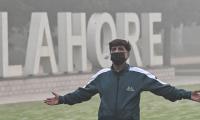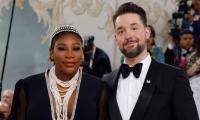Asif Ali Zardari has created history by becoming the President of Pakistan once again. His robust electoral performance on Saturday has effectively buried for now the decade-long grand plan by a band of Young Turks to reconstruct Pakistan’s political architecture who presumed their government employment entitles them to punch above their pay grade.
Only five days day ago, Shehbaz Sharif also took oath as the prime minister of the country for the second time. The elevation of the younger Sharif to the prime ministerial office may have disappointed many in the ruling Pakistan Muslim League (N) for common perception was that his elder brother, Nawaz Sharif, would reclaim the title for the fourth time. But let’s stay for now with the Bismarckian definition of politics as “the art of the possible, the attainable - the art of the next best.”
The elevations of Zardari to the Presidency and Shehbaz to the Prime Minister’s Office have too many lessons for the watchers and students of Pakistani politics. Lessons abound for those as well who tried to disrupt the natural course of political progression that started with a lot of pain and perseverance in the 1990s. The young and untrained Benazir Bhutto and Nawaz Sharif locked horns with each other while high on ego and presumed sense of entitlement. Both suffered in the process and paid through exile and even death.
Millions of dollars of public money were unnecessarily spent to defame prominent politicians through cooked up cases that ultimately failed to succeed in the courts of law. Political pygmies were propped as potent opponents through sustained propaganda on media whose mushroom creation was facilitated by a dictator and his henchmen to debilitate established media houses that were critical of recurrent martial encroachment into political realm.
True that the governments formed by the Pakistan Peoples Party in 2008 and Pakistan Muslim League (N) in 2013 were not ideal performers and may have made more mistakes than achieving meritorious milestones but the way they were hounded and asphyxiated through street agitation by a party headed by a former sportsman and his youthful followers was not above suspicion. Millions of words have been written and miles of television footage is available proving that the disruptive effort throughout the decade was underpinned by questionable support from many powerful persons within the establishment.
Hollow questions were continuously raised against the parliamentary form of government. Arguments abounded on national media supporting the need for a presidential system to “protect” a multi-racial polity. Sustained efforts were made to reverse important constitutional amendments passed through unprecedented parliamentary concurrence. Questionable endeavours were made to break provinces into smaller administrative units ostensibly to weaken political grip of parties not toeing the line dictated by the powers that be. It was argued that all of the above was done in the “wider national interest” as if the emerging two-party political system was not in favour of a politically robust Pakistan.
No doubt that yesterday’s presidential election and Monday’s prime ministerial oath have changed quite a few things for the protagonists and the antagonists. The winners don’t merit a victory dance yet. Nor should the losers lose all hope. The cacophony of conspiracy theories may continue for months about how the PMLN and PPP have been handed back the presidency and premiership. But would it change anything for Zardari and Shehbaz? It’s too early to ask that question.
The PMLN-PPP ruling alliance is the most unique formation in the country’s political history. True, both the parties had agreed to work together for mutual political respect through the historic penning of the Charter of Democracy on 14 May 2006 in London by Nawaz Sharif and Benazir Bhutto but they have never worked as a government before. The 16-month long PDM setup was shared by smaller political parties as well and the format was necessitated by the challenge originally introduced artificially but matured organically solely through the personal popularity of Imran Khan and his demagogic narrative against the Zardari-Sharif duo. Towards the end of Imran-led PTI’s government, this narrative has included his personal derision for his erstwhile martial benefactor - General (retd) Qamar Javed Bajwa.
Now, the “system” may have come to the rescue of Asif Zardari and Sharif possibly because of the unprecedented challenge posed by 9 May countrywide public agitation but does the “street” support them too. The task to rebuild the devastated economy is herculean. Can the PMLN deliver with a bruised and battered team? Will Nawaz Sharif retire to his political oblivion hoping that would help his daughter’s ultimate rise to the top slot in a few years’ time? Will the PPP underpin the PMLN-led administration in a way that would help restore the latter’s public and political position? Why would Zardari support his political rivals when he wants to see his son claim the crown worn by his son’s mother and the grandfather?
Let’s stay unsure for now as to how things would turn out for both, Asif Zardari and Shehbaz Sharif. Let’s also agree that times would get tougher for both of them and their respective parties but let’s wish for them as Nat King Cole once sang that “there may be trouble ahead, but while there’s moonlight and music and love and romance - let’s face the music and dance.”
Any individual requiring VPN for commercial purposes can apply under ‘Freelancer’ category
Court orders relevant authorities not to arrest CM Ali Amin Gandapur in any pending or new case
Those who attended dinner included CM Murad, Mian Amer, Mir Ibrahim Rahman, Sultan Ali Lakhani
Ilyas Bilour had been hospitalised for last several days for kidney treatment, says family
Auditor general's report says instead of open tender, direct contract was awarded at higher rate for Rs7.480 billion
Court directs Centre, FIA, and NAB to provide details of cases registered against Sheikh







